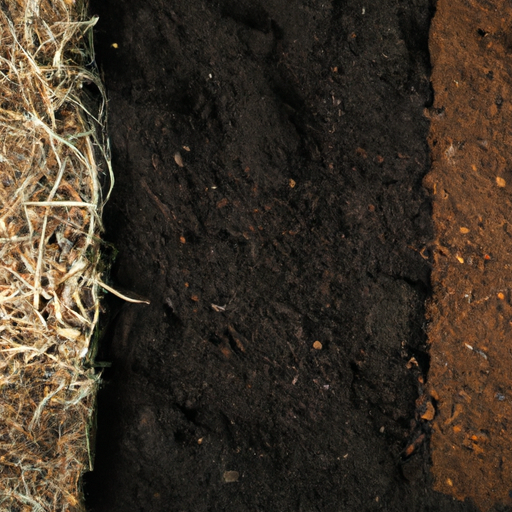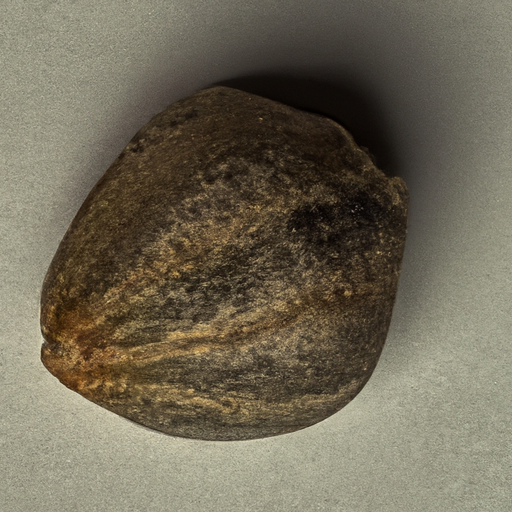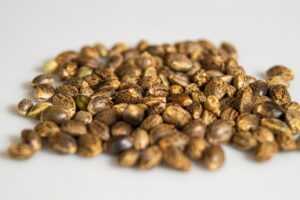Germinating cannabis seeds is a critical step in the cultivation process. This blog post outlines common mistakes in cannabis germination and provides practical tips on avoiding cannabis germination errors. From improper soaking to incorrect temperature settings, we delve into a variety of issues that could hinder your seed's growth potential.
1. The Peril of Overwatering: Are You Drowning Your Seeds?
Overwatering is one of the most common mistakes in cannabis germination, and it can have disastrous consequences for your seeds. Many novice growers tend to believe that more water will lead to better results, but this is far from the truth. When seeds are overwatered, they become waterlogged, suffocating them and preventing proper oxygen exchange. This lack of oxygen can lead to root rot, stunted growth, and even seedling death.
To avoid overwatering, it is crucial to find the right balance. Cannabis seeds require a moist environment to germinate, but not a soaking wet one. A good rule of thumb is to keep the germination medium slightly damp, but not overly saturated. Avoid pouring excessive water directly onto the seeds, as this can dislodge them or drown them in standing water.
Allowing the germination medium to dry out slightly between waterings is also important. This will ensure that the seeds have access to the necessary oxygen and prevent them from becoming waterlogged. Remember, cannabis seeds are delicate and require a gentle touch – excessive watering can lead to irreversible damage.
Monitoring the moisture levels of the germination medium is essential. Invest in a moisture meter or simply use your finger to check if the top inch of the medium feels slightly moist. If it feels too wet, hold off on watering until it dries out a bit.

1. Image of a cannabis seed submerged in water, illustrating the concept of overwatering.
2. "Temperature Matters": Misjudging The Ideal Germination Temperature
Temperature plays a crucial role in cannabis seed germination, and misjudging the ideal temperature can hinder the process. Many growers make the mistake of assuming that room temperature is sufficient for germination, but cannabis seeds require specific temperature ranges to activate the germination process.
The ideal temperature for germinating cannabis seeds is typically between 70°F to 85°F (21°C to 29°C). This range provides the optimal conditions for the enzymes in the seed to break down and activate, allowing the seedling to emerge. However, it is important to note that different strains may have slightly different temperature preferences, so it is always best to check the specific requirements for the strain you are germinating.
On the other hand, temperatures that are too high or too low can significantly impact germination rates. If the temperature is too high, it can cause the seeds to dry out or even cook, leading to their death. Conversely, if the temperature is too low, the seeds may become dormant and fail to germinate.
To ensure the ideal germination temperature, it is recommended to use a seedling heat mat or a germination chamber. These tools can provide a consistent and controlled environment for your seeds, maintaining the desired temperature range. A thermometer should also be used to monitor the temperature accurately.
3. Inappropriate Soil Use: Is Your Germination Medium Sabotaging Your Cannabis Seeds?
Choosing the right germination medium is crucial for the successful development of cannabis seeds. Unfortunately, many growers make the mistake of using inappropriate soil, which can negatively impact the germination process and hinder the growth of the seeds. Here are some key considerations to keep in mind when choosing a germination medium:
- 1. Soil Composition:
Cannabis seeds require a light and well-draining soil mixture during germination. Using heavy or compacted soil can suffocate the seeds and impede their ability to sprout. It is recommended to use a mix that contains a combination of peat moss, perlite, and vermiculite. This combination provides the right balance of moisture retention and aeration. - 2. Nutrient Levels:
During germination, cannabis seeds do not require high levels of nutrients. In fact, excessive nutrients can be harmful and lead to nutrient burn. Avoid using soil that is rich in nutrients or pre-fertilized. Instead, opt for a seed-starting mix or a light potting soil that has minimal nutrients. This allows the seedling to establish its roots before being exposed to higher nutrient levels. - 3. pH Level:
The pH level of the germination medium is critical for nutrient uptake by the seeds. Cannabis seeds prefer a slightly acidic pH range of 5.8 to 6.3. Using soil with improper pH levels can hinder nutrient absorption and affect the overall health of the seedling. It is essential to test the pH of the soil and adjust it if necessary using pH adjusters.

3. Photo of different soil types, highlighting the importance of choosing the right germination medium.
4. The Misstep of Planting Seeds Too Deep: How Deep is Too Deep?
When it comes to planting cannabis seeds, one common mistake to avoid is planting them too deep in the soil. While it may seem logical to bury the seeds deep for protection, this can actually hinder their ability to germinate and result in poor growth. So, how deep is too deep?
Ideally, cannabis seeds should be planted at a depth of about 0.5 to 1 centimeter. This shallow planting depth allows the seeds to receive sufficient oxygen and light, which are essential for germination. Planting the seeds too deep can make it difficult for them to break through the soil surface and emerge as seedlings. They may struggle to reach the surface and may even die before they have a chance to sprout.
To ensure the proper planting depth, gently press the seeds into the soil with your fingertips. Avoid pushing them too deep, as this can lead to complications. It's also important to note that different strains or seed types may require slightly different planting depths, so it's always a good idea to follow the specific instructions provided by the seed supplier.
In addition to the planting depth, it is crucial to provide adequate moisture for the seeds. After planting, lightly water the soil to ensure it remains moist but not overly saturated. This will help the seeds absorb water and initiate the germination process. Remember, overwatering can be just as harmful as planting too deep, so finding the right balance is key.
5. Neglecting Proper Sanitation Measures: Are You Inviting Pathogens to Your Germination Party?
Proper sanitation measures during the germination process are often overlooked but are crucial for successful cannabis seed germination. Neglecting these measures can inadvertently invite pathogens to your germination party, leading to the growth of harmful bacteria, fungi, or other microorganisms that can damage or even kill your seeds.
One key step in maintaining proper sanitation is to clean and sterilize all the equipment and tools you'll be using during the germination process. This includes containers, trays, soil, and any other materials that will come into contact with the seeds. By thoroughly cleaning and sterilizing these items, you can significantly reduce the risk of introducing pathogens to your germinating seeds.
Another important aspect of sanitation is washing your hands thoroughly before handling the seeds or any germination equipment. Our hands can carry a multitude of bacteria and other contaminants, which can easily be transferred to the seeds and surrounding environment. By washing your hands with soap and water or using a hand sanitizer, you minimize the risk of introducing harmful pathogens to the germination process.
Furthermore, it is crucial to maintain a clean and sterile germination environment. This means keeping the area free from dust, dirt, and any potential sources of contamination. Regularly clean the surfaces and ensure proper air circulation to prevent the buildup of stagnant air that can harbor pathogens.
Additionally, using sterile or pasteurized soil is essential. Soil can harbor various pathogens that can harm the germinating seeds. By using sterile soil or pasteurizing the soil yourself, you eliminate the risk of introducing harmful microorganisms to your seeds.
Lastly, be mindful of cross-contamination. Avoid using the same equipment, such as gloves or tools, for different plants or seed batches, as this can transfer pathogens from one to another. It's best to dedicate separate tools for each batch or thoroughly clean and sterilize them between uses.

5. Image of a cannabis germination station with clear signs of neglect and unsanitary conditions.
6. Inadequate Lighting: Are You Keeping Your Seeds in the Dark?
When it comes to germinating cannabis seeds, lighting plays a crucial role in the early stages of growth. Inadequate lighting can have a detrimental effect on seed germination and hinder the overall development of the plant. Here are three key points to consider when it comes to providing the right lighting for your germinating cannabis seeds:
1. The Importance of Proper Light Spectrum:
Cannabis seeds require specific light spectrums for optimal germination. While natural sunlight is the best option, it may not always be feasible, especially in indoor settings. In such cases, using artificial lighting sources like fluorescent or LED grow lights can provide the necessary light spectrum for seed germination. The ideal spectrum for this stage is typically in the blue spectrum range, as it promotes strong root development and healthy seedling growth.
- 2. Duration and Intensity of Light:
In addition to the right spectrum, it is crucial to provide the seeds with the appropriate duration and intensity of light. During the germination stage, it is recommended to provide 18-24 hours of light per day to mimic the long daylight hours of spring and summer. This extended light period helps the seeds break through the soil and encourages healthy growth. Additionally, the light intensity should be kept relatively low to prevent heat stress on the seeds. Too much heat can dry out the soil and cause damage to the delicate seedlings. - 3. Maintaining Proper Distance:
While providing adequate light is essential, it's equally important to maintain the right distance between the light source and the seeds. If the light is too far away, it may not provide enough intensity for the seeds to germinate. On the other hand, if the light is too close, it can cause excessive heat, which can lead to the drying out of the soil or even burning the seeds. It is recommended to keep the light source approximately 2-4 inches away from the seeds, ensuring that they receive sufficient light without the risk of overheating.
7. Impatience and Rough Handling: Are You Giving Your Seeds the Gentle Care They Need?
When it comes to germinating cannabis seeds, patience and gentle handling are key factors that often get overlooked. Many growers make the mistake of being impatient and rough with their seeds, which can have a negative impact on germination success. Here are a few reasons why you should give your seeds the gentle care they deserve:
Firstly, cannabis seeds are delicate and susceptible to damage. Rough handling can result in physical harm to the seed, such as cracking or crushing, which can prevent germination altogether. It's important to handle the seeds with clean and dry hands, using gentle motions to avoid any unnecessary pressure or force.
Secondly, impatience can lead to premature actions that hinder the germination process. Some growers may be tempted to check on their seeds frequently or even dig them up to see if they have sprouted. However, this disrupts the natural process of germination and can cause unnecessary stress to the seeds. It's important to trust the process and resist the urge to interfere too soon.
Finally, rough handling can also disrupt the delicate root development of germinating seeds. The roots are crucial for absorbing nutrients and anchoring the plant, and any damage to them can significantly impact the overall health and growth of the cannabis plant. By being gentle and careful when handling your seeds, you give them the best chance to develop strong and healthy roots.

7. Image of a damaged cannabis seed due to rough handling.
Top Mistakes to Avoid When Germinating Cannabis Seeds:
| Mistake | Cause | Result | Solution |
|---|---|---|---|
| Incorrect Soaking Time | Not giving the seeds enough time to absorb the water | Failed germination or weak plants | Give seeds enough time to soak |
| Not Removing the Husk | Leaving the seed husk on when planting | Seeds will not sprout | Gently remove the husk from each seed |
| Incorrect Temperature | Having the temperature too hot or too cold | Germination process is hindered | Maintain a temperature of 70-85°F |
| Not Enough Light | Not providing enough light for seedlings | Seedlings become weak and spindly | Provide 12-18 hours of light per day |
Avoiding mistakes in cannabis germination is crucial for a successful yield. By being attentive to the seeds' needs and avoiding the common pitfalls outlined in this post, you can ensure a healthy start for your cannabis plants. Remember, every successful grow starts with properly germinated seeds.





